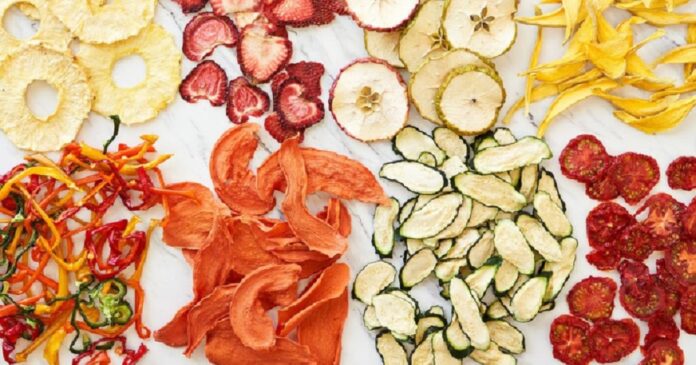Most fruits and vegetables are only available seasonally. More so, they easily perish if you do not keep them well or use them in a short time. So, preserve fruits and vegetables in ways that will make them useful later.
The basic principle for food preservation is to keep bacteria away from acting on the food.
You must preserve fruits and vegetables in ways that they do not lose their flavour and even their colour. Not only does it keep longer, but it also saves cost during the offseason.
Your fruits and vegetables can still be useful after a longer period, but first, read on.
Freezing
This, I guess, is the easiest, quickest and commonest way. However, freezing and thawing can change the texture of some fruits and vegetables. Also, note that freezing only keeps bacteria dormant until you defrost.
What precautions do you take before, during or after freezing fruits and vegetables?
Drying
Have you tried drying any fruit or vegetable?
It is quite common with pepper.
This method to preserve fruits and vegetables require that you remove the water content. This makes it difficult for bacteria to survive on the fruit or vegetables.
Drying fruits and vegetables can change the texture and taste. You can use a dehydrator to dry your fruits and vegetables. You can dry them down to about 5% water content. If they feel sticky or spongy then the drying is not complete.
After drying successfully you can keep them under room temperature. You can also use an oven. They may not give the same results though.
Salting
The first thought that comes to mind is salted fish (koobi). But, we are talking about vegetables here.
Can you name a fruit you can salt to preserve it?
Salt is hypertonic. In simple terms, it means organisms easily get dehydrated in salt. So, bacteria are not able to survive in such a condition. After salting, you can store food under room temperature for long periods.
When salting vegetables, submerge them in a pan of water. Add salt until it reaches the saturation point. At saturation point, you will notice the salt is settling on the surface of the vegetable. Refrigerate the vegetables with water for a week. Then, drain the salt solution and cover the vegetables with more salt. Store in a cool dry place to dry.
Fermenting
In fermentation, you convert carbohydrates to alcohol or organic acids.
With this process, you need to add your salt and whey or culture to water. This creates the brine solution for the fermentation of the fruit or vegetables.
Cut your fruits or vegetables evenly into chunks or slices. Put the food into an airtight container and pour the brine on top. Make sure all the food remains submerged in the brine until end of fermentation. Fruits take about 48hours to ferment. Vegetables take a little longer due to their low sugar content.
Canning
Not exactly putting food in cans. In this case, you use bottles and mason jars. It requires that you seal the fruit or vegetables in sterile and airtight containers. You can do this by using heat to sterilize and seal the container.
With this method, you need the equipment, pressure canner. Then, your canning jars, seals, rings, lids, a funnel and a pot for blanching.
In the process, you kill the bacteria inside the jar with heat. Then you apply steam pressure to keep the container airtight. This creates a sterile vacuum for the fruit or vegetables. They can stay fresh for several months.
Pickling
Pickling is simply immersing food in a container with brine or vinegar to increase the shelf like.
Bacteria are not able to survive in such condition and so the food is safe and good to eat after a long period.
Pickling is a simple method to preserve fruits and vegetables. However, it changes the flavour or most fruits and vegetables.
To do this, create a solution of white vinegar, salt and sugar. Bring to boil in a pan. Place the fruits and vegetables in the jar and pour the solutions on top until they are submerged. Seal the jar airtight and store.
Oil Packing
Another way to preserve fruits and vegetables is by oil packing.
This uses vegetable oils and makes it difficult for bacterial growth. However, it greatly affects flavour. It is good for preserving herbs, tomatoes, onions, eggplants and olives. Oil packing with vinegar creates a no-air (anaerobic) and acidic condition that does not promote bacterial growth.


